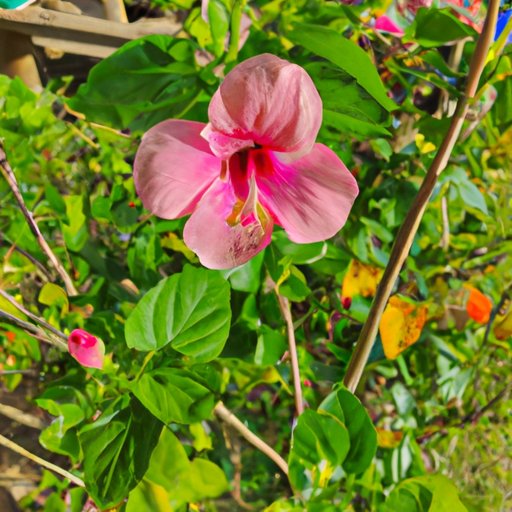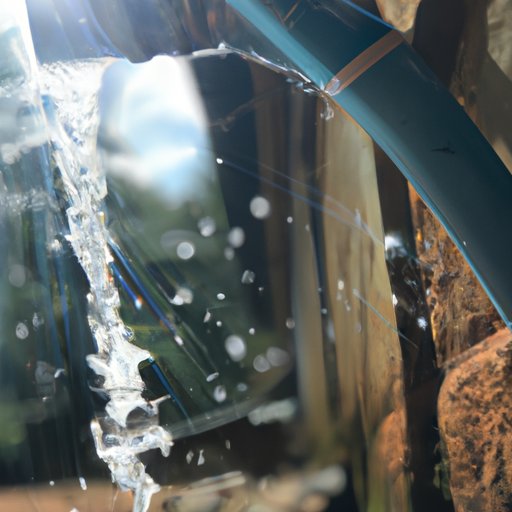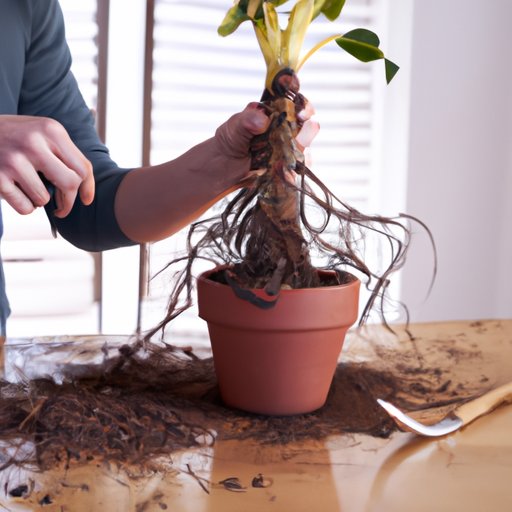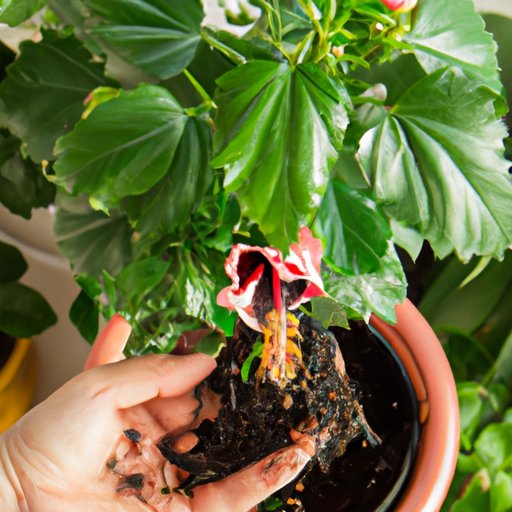Introduction
Hibiscus plants are some of the most beautiful and rewarding houseplants you can grow. With their vibrant flowers and lush foliage, they bring a lush, tropical feel to any space. Taking good care of your hibiscus is essential for its health and beauty, but it’s not always easy. This guide will provide you with all the information you need to ensure your hibiscus thrives!
What is a Hibiscus Plant?
Hibiscus is a genus of flowering plants in the mallow family. There are hundreds of species of hibiscus, ranging from shrubs to trees. Most of the hibiscus plants grown indoors are hybrids of the Chinese hibiscus (Hibiscus rosa-sinensis), which is native to East Asia. These plants are prized for their large, showy flowers that come in a variety of colors, including red, pink, orange, yellow, and white.

Benefits of Growing a Hibiscus at Home
Growing a hibiscus at home has numerous benefits. Not only do they look beautiful, but they also help purify the air by removing pollutants and toxins. They’re also relatively low-maintenance and don’t require much attention. Plus, they’re easy to propagate, so you can share them with friends and family.

Providing Consistent Water and Sunlight
How Much Water and Sunlight Does the Plant Need?
Hibiscus plants need plenty of water and sunlight to thrive. They prefer bright, indirect sunlight, but direct sunlight is also fine, as long as it’s not too strong. As far as watering goes, you should water your hibiscus whenever the top inch or two of soil feels dry. Overwatering can lead to root rot, so make sure to let the soil dry out between waterings.
Tips for Providing Consistent Water and Sunlight
To ensure your hibiscus gets the proper amount of water and sunlight, it’s important to be consistent. Water your plant at the same time every day and make sure to adjust the amount of water depending on the season. For example, in the summer months, your hibiscus may need more water than in the winter. In terms of sunlight, try to keep your hibiscus in an area where it can get at least 4-6 hours of bright, indirect sunlight per day.
Planting in Well-Draining Soil
Why Is Well-Draining Soil Important?
It’s important to plant your hibiscus in well-draining soil. Poorly draining soil can cause root rot, which can kill your plant. Well-draining soil allows excess water to drain away, preventing the roots from sitting in water for too long.
Tips for Planting in Well-Draining Soil
When planting your hibiscus, make sure to use a potting mix that is specifically designed for houseplants. You can also add perlite or sand to the soil to improve drainage. It’s also a good idea to choose a pot with drainage holes to prevent water from pooling in the bottom.
Pruning Regularly to Promote Healthy Growth
Benefits of Pruning
Pruning is an important part of taking care of your hibiscus. Pruning helps promote healthy growth and encourages new buds to form. Pruning also helps shape the plant so it looks its best.
Tips for Pruning Hibiscus Plants
To prune your hibiscus, use sharp, sterilized pruning shears. Cut off any dead or dying branches, as well as any branches that are growing in an unwanted direction. Make sure to cut just above a node, as this will encourage new growth. Prune your hibiscus every few weeks to keep it looking its best.
Monitoring for Pests and Diseases
Common Pests and Diseases of Hibiscus Plants
Hibiscus plants are susceptible to pests and diseases. Common pests include aphids, mealybugs, spider mites, and scale insects. Common diseases include root rot, powdery mildew, and leaf spot. It’s important to monitor your hibiscus for signs of pests and diseases and to take action if necessary.
Tips for Identifying and Treating Pests and Diseases
If you notice any signs of pests or diseases on your hibiscus, it’s important to act quickly. Start by identifying the problem and then research the best treatment option. If the infestation is severe, you may need to use chemical treatments. However, there are also natural treatments available, such as insecticidal soap and neem oil.
Fertilizing Every Few Weeks
What Kind of Fertilizer Should You Use?
Fertilizing your hibiscus is important for promoting healthy growth. Use a balanced fertilizer that contains nitrogen, phosphorus, and potassium. Avoid fertilizers that contain high levels of nitrogen, as this can cause excessive leaf growth at the expense of flower production.
Tips for Fertilizing Hibiscus Plants
Fertilize your hibiscus every few weeks during the growing season. Use a liquid fertilizer and follow the directions on the package. Avoid over-fertilizing, as this can burn the roots and leaves. Additionally, avoid fertilizing in the winter when the plant is dormant.

Repotting the Plant as Needed
When Is Repotting Necessary?
Repotting your hibiscus is necessary when it starts to outgrow its pot. Repotting also helps to refresh the soil and can help control pest and disease problems.
Tips for Repotting Hibiscus Plants
When repotting your hibiscus, choose a pot that is 1-2 inches larger than the previous one. Make sure to use a potting mix that is specifically designed for houseplants. When repotting, gently loosen the root ball and remove any dead or damaged roots. After repotting, make sure to water the plant thoroughly.
Inspecting the Leaves and Stems for Signs of Damage
Common Signs of Damage
It’s important to inspect your hibiscus regularly for signs of damage. Look for discolored or wilted leaves, as well as any spots or bumps on the stems. These could be signs of pests or diseases.
Tips for Inspecting Leaves and Stems
Inspect your hibiscus weekly for signs of damage. Use a magnifying glass to get a closer look. If you notice any signs of pests or diseases, take action immediately. Remove any affected leaves and stems and treat the plant with an appropriate insecticide or fungicide.
Conclusion
Taking care of a hibiscus plant at home isn’t difficult, but it does require some time and effort. By following these tips, you’ll be able to keep your hibiscus healthy and thriving for years to come.
(Note: Is this article not meeting your expectations? Do you have knowledge or insights to share? Unlock new opportunities and expand your reach by joining our authors team. Click Registration to join us and share your expertise with our readers.)
